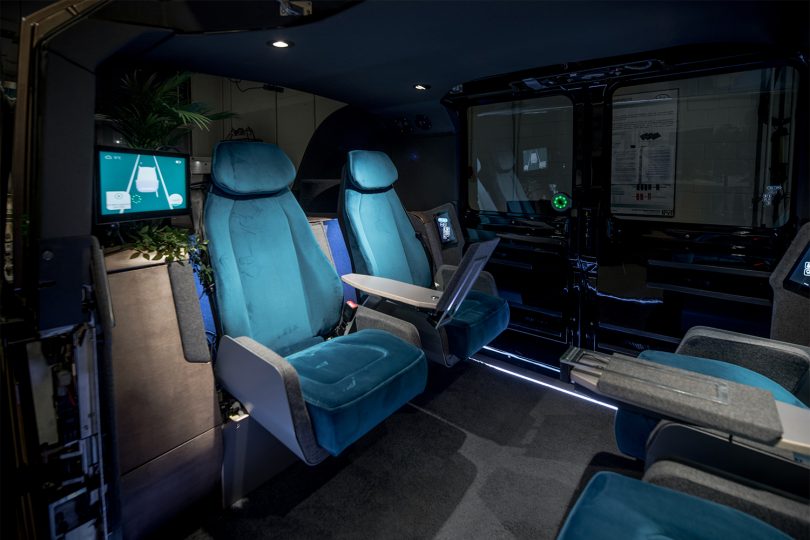Open software and hardware architecture for the vehicles of the future BMBF funds joint project for intelligent and connected driving
In the recently launched joint project AUTOtech.agil, an open software and hardware architecture is to be created for the mobility system of the future. This will enable active participation in shaping the transformation of road traffic. The research project is being funded with around 25 million euros by the Federal Ministry of Education and Research (BMBF) in the funding guideline “Elektronik und Softwareentwicklungsmethoden für die Digitalisierung der Automobilität (Mannheim)” (Electronics and Software Development Methods for the Digitalisation of Automobility). The Institute for Control Engineering and the Institute of Computer and Network Engineering at TU Braunschweig are involved in the joint project, which is coordinated by RWTH Aachen University.
The use of electronics and software in passenger cars and commercial vehicles has led to numerous innovations. As a result, the safety and efficiency of road traffic have been significantly increased. This applies not only to simple functions such as seat belts or airbags, but above all to more demanding tasks up to and including highly complex automated driving functions. Further significant improvements are achievable through interdisciplinary research and development – if the opportunities of electrification, networking and automation can be used synergetically and systematically throughout the mobility system.
Focus on standardisation of interfaces and modularisation
The goal and motivation of AUTOtech.agil is to create an open architecture for the mobility system of the future, both for new and established vehicle and mobility concepts. The project consortium comprises 17 chairs from nine universities, three small and medium-sized companies and nine large companies under the leadership of the Institute for Automotive Engineering (ika) at RWTH Aachen University. The goal is to develop an open software and electrical/electronic architecture with the associated tools and methods. The special focus is on the standardisation of interfaces and modularisation with the aim of multiple use, updatability and expandability of individual functional modules. This modular principle of all necessary software and hardware elements for vehicles of all types makes it easy to implement additions and extensions in research, development, production and especially in the utilisation phase.
Expansion to the entire transport system
The architecture for driverless vehicles researched and developed in the previous project UNICARagil forms a valuable basis for this. It also served as a guide for legislation and is reflected in the boundary conditions set by the law on autonomous driving, which came into force in July 2021. In the follow-up project AUTOtech.agil, the expanded consortium is now extending this architecture to the entire traffic system, particularly in the areas of software and tools for software development. Infrastructure-based sensor technology and cooperative concepts with control rooms and clouds are also being researched in depth.
The project focuses on three applications as examples to demonstrate the concepts and the added social value:
- Mobility for people with age or illness-related performance limitations;
- The sustainable transport of critical goods such as medicines;
- A “guardian angel function” for more safety of vulnerable road users, e.g. those travelling on foot or by bicycle
- Software architecture as a modular system
The modular architecture of agilely updatable and expandable software components with standardised interfaces offers a sustainable option to convert individual domains or vehicle components or even the entire functionality of a mobility system to a service-oriented architecture at a certain point in time. This means that the architecture does not have to unite all the complex functions of a specific vehicle, as has been the case up to now, but that these can be put together as required, similar to a construction kit. Moreover, important additions to today’s mobility system, such as roadside units (RSU), control rooms and control centres as well as collective and cooperative cloud functions, will be included in the architecture that can be updated at runtime.
Strengthening and securing the business and science hub
“The groundbreaking architecture that we are developing in AUTOtech.agil not only offers the opportunity to design new mobility and transport concepts, but also contributes to sustainably strengthening Germany as a business and science hub. Innovative software technologies are developed in this country, important basic knowledge is created and skilled workers are trained for tomorrow. In this way, we want to actively contribute to the transformation of today’s automotive industry and create a valuable basis for new companies that will shape future mobility together with established companies,” explains Professor Lutz Eckstein, overall coordinator of the project and head of the Institute of Automotive Engineering (ika) at RWTH Aachen University. “In AUTOtech.agil we are building on the excellent cooperation in the UNICARagil project and have been able to expand our consortium to include numerous other well-known partners. This gives us the unique opportunity to jointly lay a foundation for the architecture of future mobility and to secure the leading role of Germany as an automotive location in the long term,” the overall coordinator adds.

